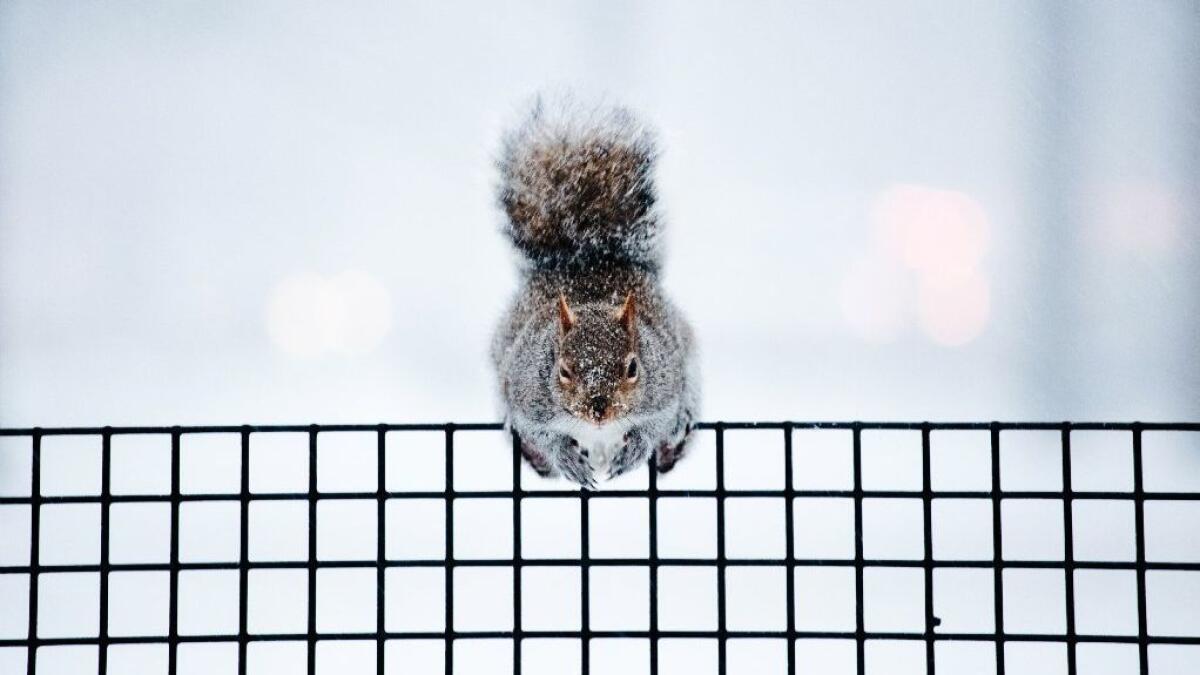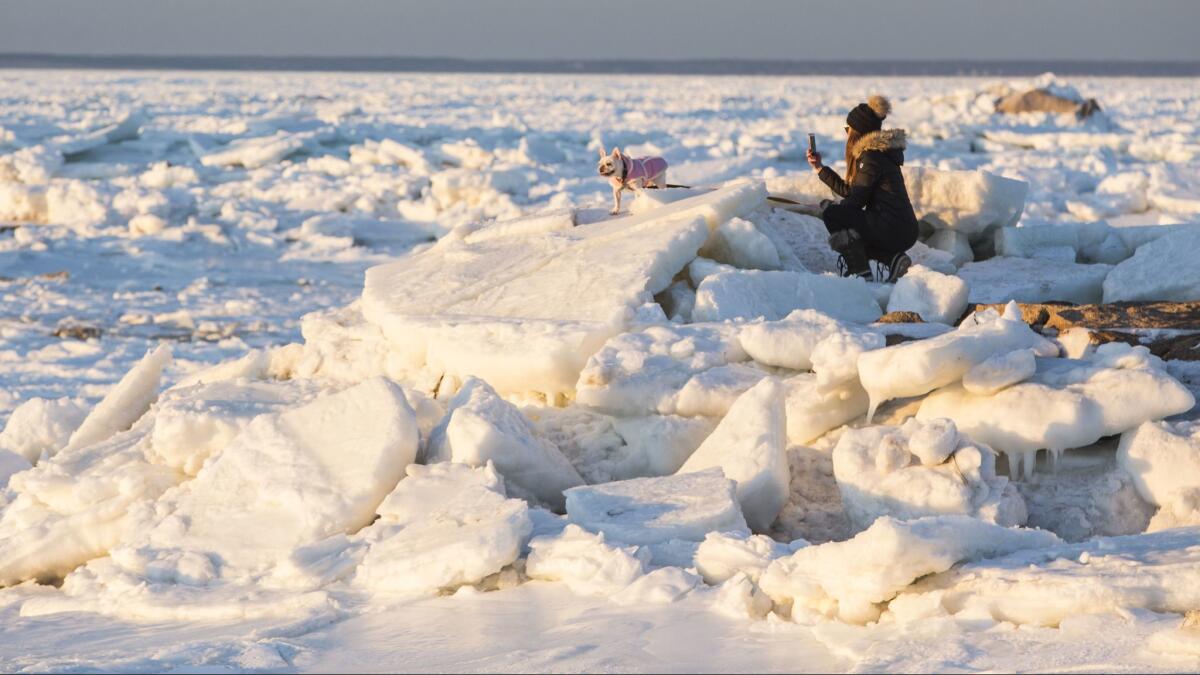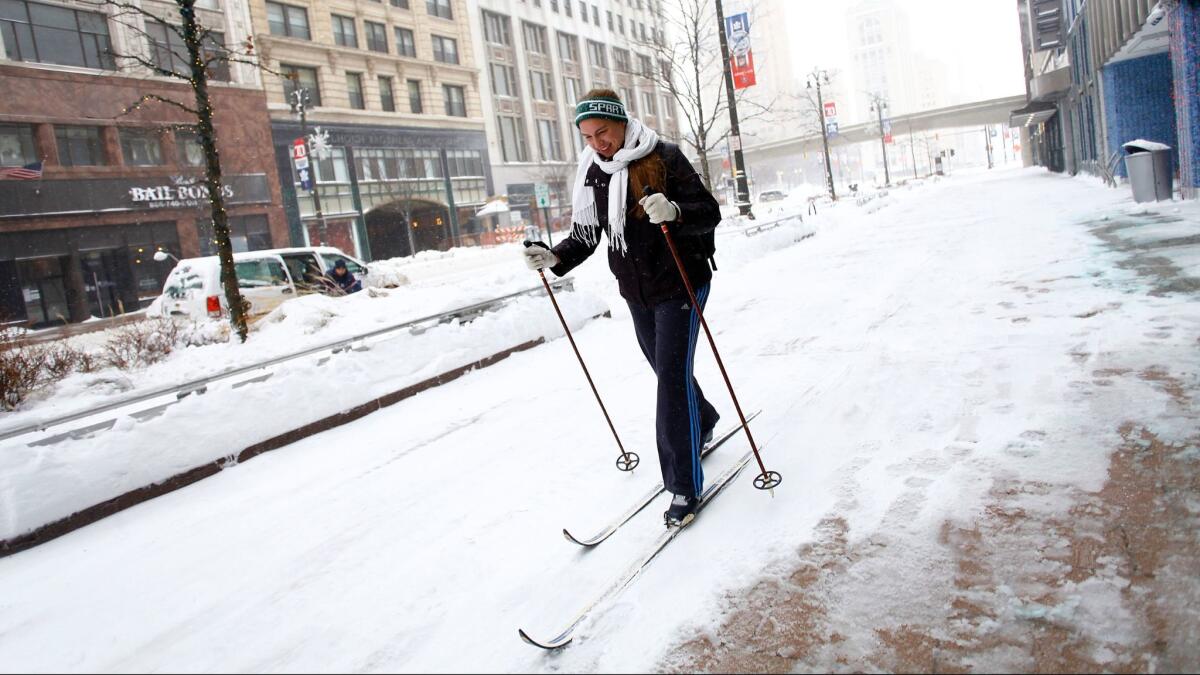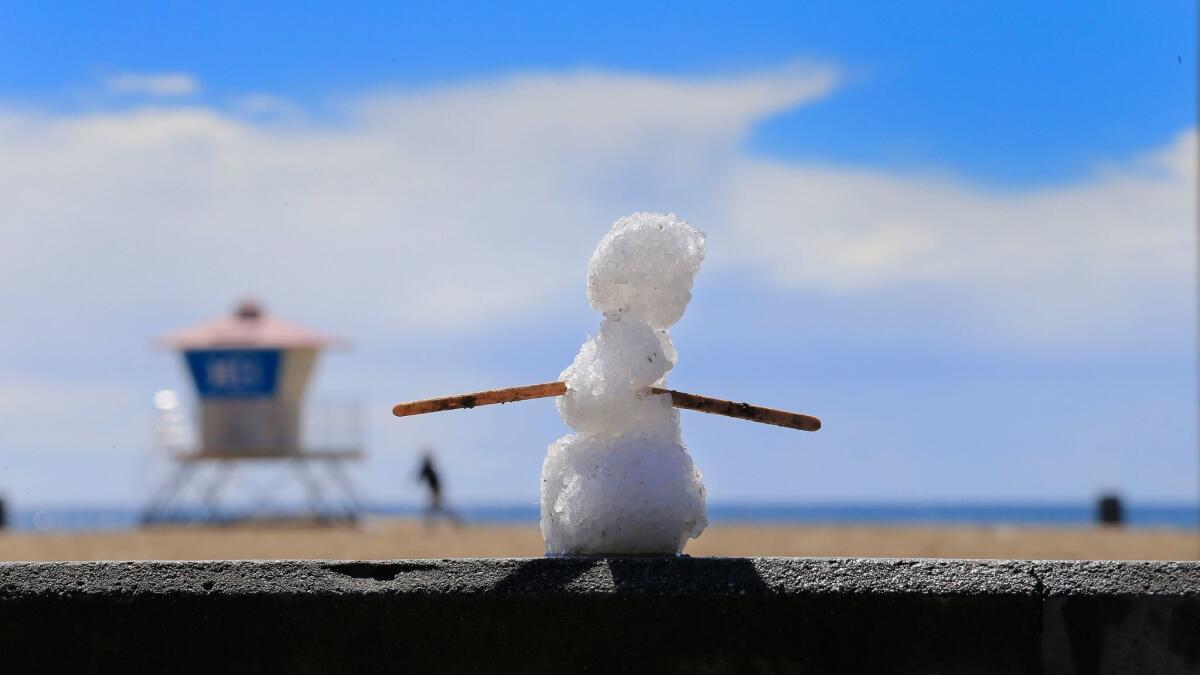‘Polar vortex’ gives way to ‘bomb cyclone.’ This and other weather terms we love

“Bomb cyclone” sounds more like a disaster movie title — with the trailer beginning with “In a world … ” — and in recent days the weather term has been trending, no doubt because of its violent imagery.
Turns out, bomb cyclone — also known as “bombogenesis” (really) — is less terrifying than it sounds.
Alan Dunham, a meteorologist at the National Weather Service near Boston, said weather experts use the term when describing certain types of winter storms.
“It certainly has gone around and got a wide distribution this time around,” Dunham said. “It’s a phrase that’s used — you can look it up in Wikipedia — just for a storm system that’s undergoing rapid intensification.”
Google doesn’t release numbers on searches but says that in the past week search interest in “bomb cyclone” was 120% higher than searches for “winter storm” in the U.S. The top three areas searching the term were the District of Columbia, New York and Rhode Island.
The storm currently gripping most of the nation has reminded us that, during a significant weather event, it’s good to have a handle on what meteorological terms mean.

Winter hurricane
Although the term appears online and even in some news reports, it’s wrong. “There’s no such thing as a ‘winter hurricane,’ ” Dunham said.
Rather, for some storms, the National Weather Service will issue a warning about hurricane-force winds.

Polar vortex
In 2014, “polar vortex” was the meteorological darling of Twitter. People of the internet provided many polar vortex memes.
That said, as the National Weather Service notes: “There are several things the polar vortex is NOT. Polar vortexes are not something new. The term ‘polar vortex’ has only recently been popularized, bringing attention to a weather feature that has always been present.”
The polar vortex is a large area of low pressure and cold air surrounding both of the Earth’s poles, according to the agency. It always exists near the poles, but weakens in summer and strengthens in winter.
“It’s not really a phrase I like — it makes it sound a lot worse than what it actually is," Todd Heitkamp, a warning coordination meteorologist for the weather service in Sioux Falls, S.D., told The Times in 2014. "This has happened before."
This winter, the memorable term has gotten some mention, but can’t compete with bomb cyclone.
Nor’easter
Also called a “northeaster” or even “no-theaster,” it’s used — wait for it — during Northeastern winters.
It’s an old term, with the Dictionary of American Regional English recording its first usage in 1774.
Here’s what the weather service says about it: “These winter weather events are notorious for producing heavy snow, rain, and tremendous waves that crash onto Atlantic beaches, often causing beach erosion and structural damage. Wind gusts associated with these storms can exceed hurricane force in intensity. A nor'easter gets its name from the continuously strong northeasterly winds blowing in from the ocean ahead of the storm and over the coastal areas.”
Bergy bits and more
The weather world abounds in terms sure to impress, or at least confuse.
Consider “bergy bit,” used to describe a piece of ice that has broken away from an iceberg. It can also refer to the remains of a melting iceberg.
The weather service uses the acronym “GoMoos” for “Gulf Of Maine Ocean Observing System.”
Then there’s “pancake ice,” which the weather services describes as “circular flat pieces of ice with a raised rim; the shape and rim are due to repeated collisions.”
And although “gustnado,” denotes a small whirlwind, “sharknado” is not in the weather service’s glossary of terms.
One word that millions of cold Americans, unable to drive, fly or leave their homes, cannot wait to hear? Summer.

ALSO
‘Bomb cyclone’ moves north, bringing blizzard conditions and frigid temps
Sign up for Essential California
The most important California stories and recommendations in your inbox every morning.
You may occasionally receive promotional content from the Los Angeles Times.








